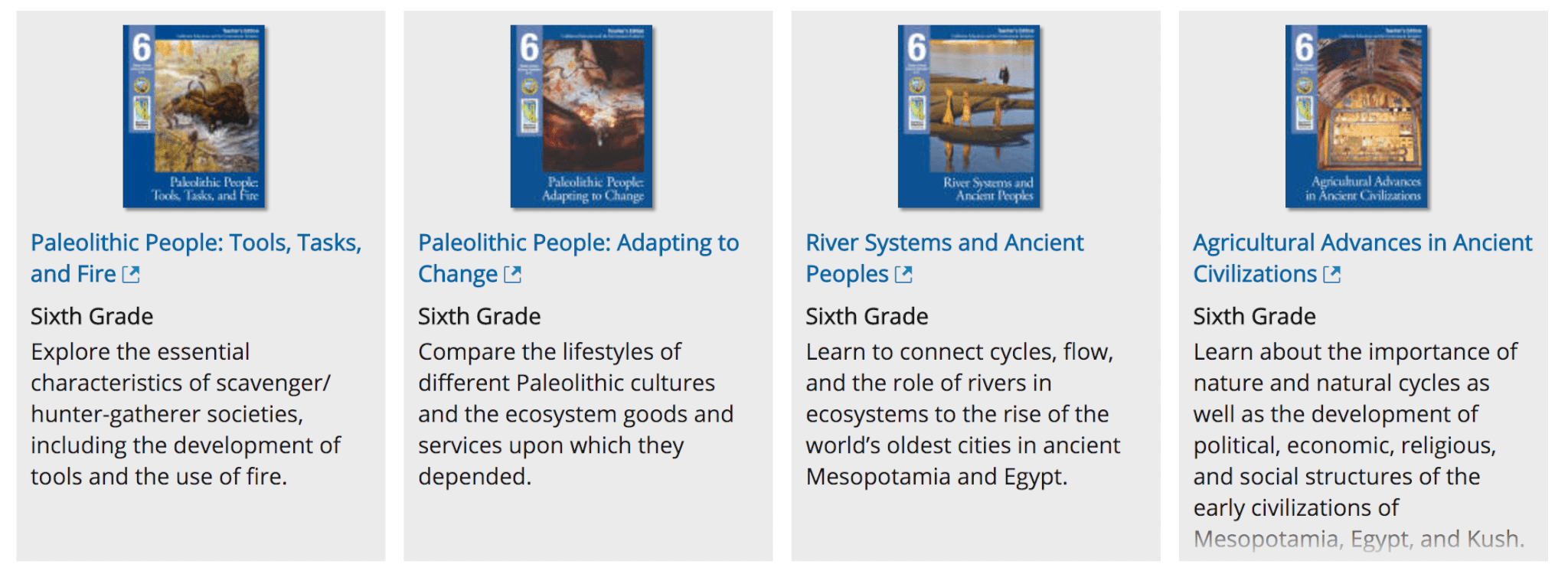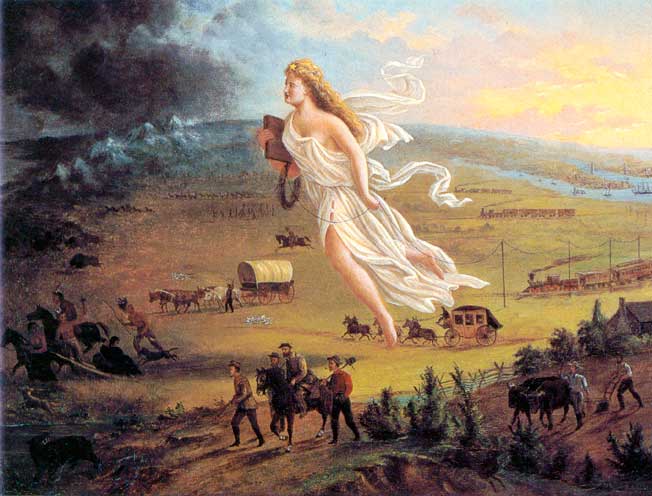Nearly every day we hear news that pertains to the environment, whether it’s a local, state, national, or global issue. Of course, this news is not isolated to a single moment in time, but is connected to a wide variety of choices made in the past, some of which were grounded in economics, others in politics, and others for reasons of expediency.
Pollution, flooding, scarce water supplies, endangered species, and so much more can be explained in large part by examining where populations have chosen to settle and develop, how industries have harnessed resources for production, and whether and what kind of government regulations evolved to address the relationship between people and the natural world. The history–social science classroom is therefore an excellent place to teach students about the connections between human activities and environmental quality, and to investigate the current political, economic, legal, and civic developments that shape and are shaped by the environment.

The good news is that there is growing support from the state for fostering students’ environmental literacy. The Environmental Principles and Concepts (EP&Cs), which examine the interactions and interdependence of human societies and natural systems, were adopted by the State Board of Education in 2004, and are required by law to be included in future history-social science (and science) frameworks and textbooks. Subsequently, the Education and the Environment Initiative (EEI) developed numerous curriculum units that offer a wealth of teaching resources that embed the EP&Cs into the History–Social Science (HSS) units. State Superintendent of Public Instruction Tom Torlakson published the Blueprint for Environmental Literacy in 2015, highlighting the importance of educating every California student in, about, and for the environment. And, in 2016, the State Board of Education approved the new History–Social Science Framework to guide instruction that will also further the goal of environmental literacy.
The Framework emphasizes the development of student content knowledge, discipline-specific inquiry, student literacy, and citizenship. One of the ways the Framework addresses these goals is through recommendations for integrating the EP&Cs into history, geography, economics, and government classroom lessons. It does this by offering guiding questions that position the environment as an integral component in historical investigations. For example:
- What were the results of the Industrial Revolutions? How was technology and the environment transformed by industrialization? (10th Grade)
- How did the environment influence human migration, ancient ways of life, and the development of societies? (6th Grade)

In addition to explicit questions about the role the environment played in shaping societies of the past, the Framework asks questions that require knowledge of geography, natural resources, and natural systems, as seen in the following guiding questions:
- How did the different regions of the area that would become the United States affect the economy, politics, and social organization of the nation? (5th Grade)
- How did America’s economy, industries, and population grow after the Civil War? (8th Grade)
Teachers have a good deal to digest as they consider the recommendations of the new HSS Framework. I like to point out to them that integrating the EP&Cs requires only a slight shift in instruction. It involves using the environment as one more category of analysis—in addition to the more traditional political, economic, and social–cultural lenses—to strengthen and deepen content knowledge.
Many teachers already do this in their classroom, especially when they teach about the California Gold Rush, or the development of early civilizations in the river valleys of Afro-Eurasia. But we can strive to make this easier for teachers by providing them with quality teaching resources. The EEI certainly does this for teachers, and the California History–Social Science Project (CHSSP) offers an online webinar series that models Framework-aligned history–social science instruction using an environmental lens. In the coming years, we can expect textbooks to do the same. Publishers know that California will not adopt instructional materials that fail to incorporate the EP&Cs.
Late last year I spoke to a group of textbook publishers in Sacramento, modeling for them how I would teach eighth-grade American western expansion with an environmental lens. I want to share it here because I think it’s a clear example of just how necessary a focus on the environment is when studying the past. Important themes running throughout the long era of western expansion include: the national priorities and aspirations attached to expansion; the political implications of gaining new territory; the social impact of expansion, the hope it represented to some, and the hazards to others; the economic developments based on expanded resources and settlement; and the opportunities and restrictions presented and imposed by the landscapes and resources of the West.
All of these variables influenced one another as the nation grew. Each of the traditional perspectives we use to evaluate western expansion is ultimately related to the natural systems and resources found across North America. Consider, for example, how ideas about productivity and wealth drove Americans of European descent further west where they clashed with American Indians who held very different beliefs about the land. Centuries’ worth of American social and political history can be directly tied to the interplay between different ideas about land ownership and use.
The concept of manifest destiny drove this western expansion. Writing in 1845, John O’Sullivan coined the phrase as he argued for an idea—that the United States was destined to become a continental power, and that providence smiled upon this endeavor. Widespread support for the idea helped lead to the Mexican–American War which, like practically every war, was at its core centered around the ownership and use of natural systems and the natural resources they provide. In this instance, and in countless others throughout history, political and social conflict was tied to who controlled and benefitted from particular geographic areas, and the ecosystem goods and resources they provided such as timber, mineral ores, water, and land.

This image painted by John Gast in 1872, just three years after the completion of the Transcontinental Railroad, is a visual representation of the concept of manifest destiny. Entitled “American Progress,” Gast applauded western expansion as he portrayed the technologies, the transportation, and the processes that made it possible. Even a cursory look at the painting tells us how crucial the western environment and its resources were to American expansion.
This brings me to my last point about the important role of the environment in history. Ecosystems, natural resources, climate, and geography, not just in the American West but throughout history, are driving forces that shape human cultures, societies, and civilizations. These are not one-time static events, but ever-evolving relationships comprised of interactions and influences between people and the environment. As the HSS Framework and the EP&Cs reach classrooms across the state, students will look to the natural world with a greater understanding of the role it has played in shaping societies of the past. Ideally, students will take from this that the decisions they make regarding natural resources will shape their futures as well.

